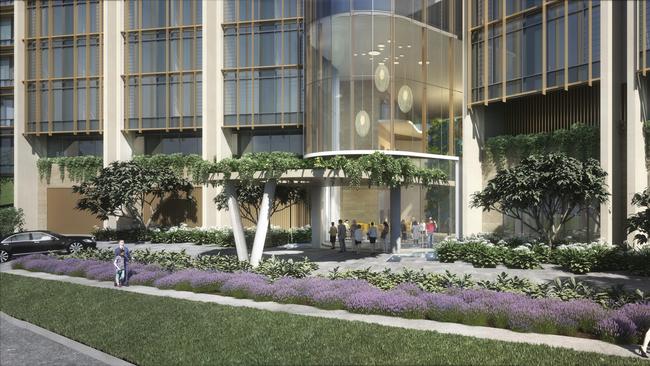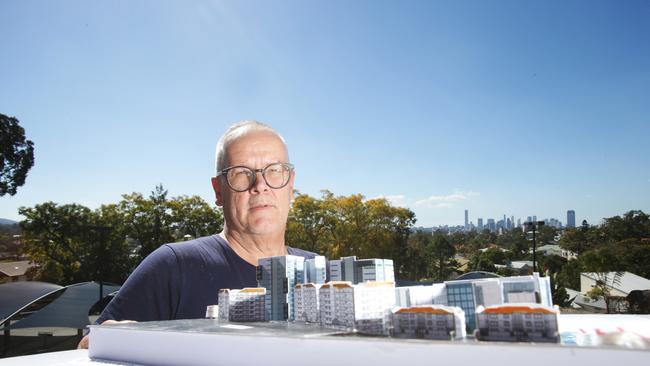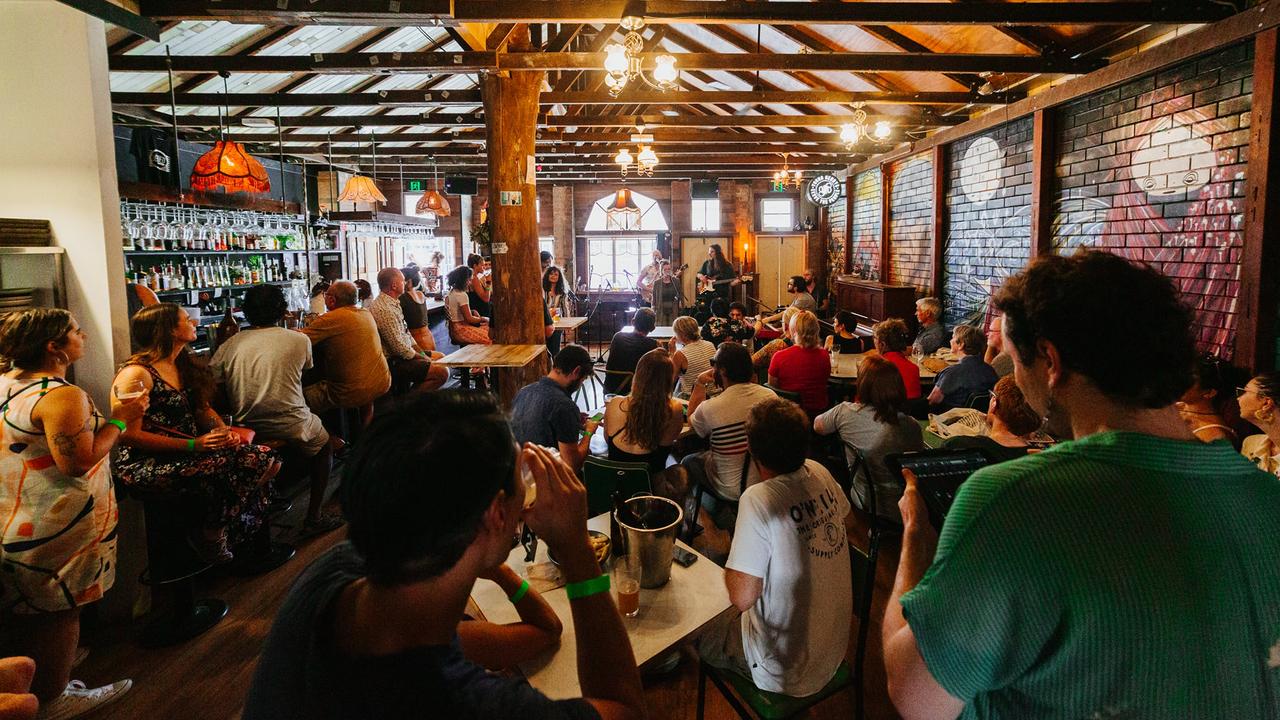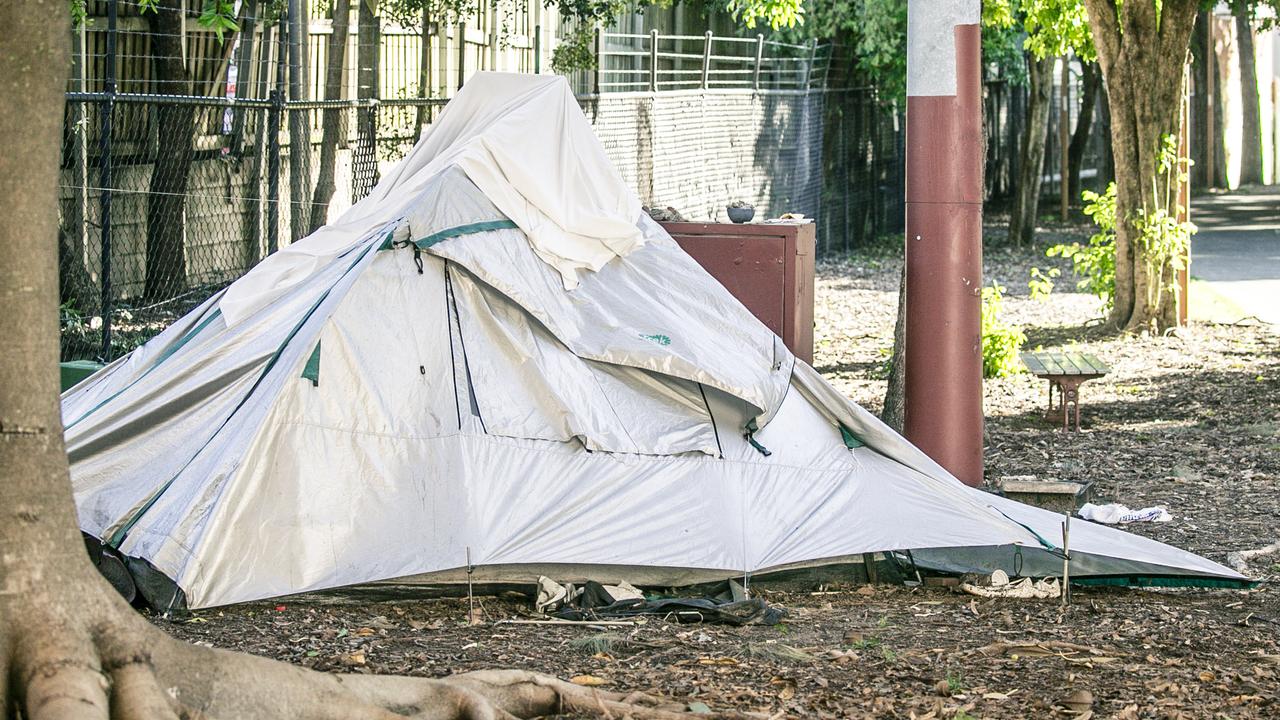Massive retirement, aged care project given green light
Brisbane residents are outraged, distraught and exhausted after losing a two-year battle against a massive highrise retirement project.

Local
Don't miss out on the headlines from Local. Followed categories will be added to My News.
Hundreds of Brisbane residents have been left distraught and outraged after a court allowed a scaled-back version of a gigantic, three-tower retirement and aged care facility.
The Planning & Environment Court last week handed down a lengthy, complex ruling upholding Tricare Australia’s appeal against a decision by Brisbane City Council to knock back an amended development application, in November, 2017.
The three-tower proposal at 52 Seven Oaks St, Taringa, will now dominate the skyline in Brisbane’s inner-west, but at a smaller scale than it originally planned.
Building 1’s height has been reduced from 16 to 7 storeys and the number of units has gone from 98 to 40.
Building 2 has shrunk from 14 to 7 storeys and the number of units from 53 to 32.
Building 3 has gone from 9 to 7 storeys and from 255 beds to 198 beds.
SUBSCRIPTION OFFER: SIGN UP FOR 12 MONTHS AND RECEIVE A SAMSUNG GALAXY TAB A 8.0 (MIN COST $390)
“Protect Taringa needs to review the court judgment, which contains 176 conditions of approval,’’ a spokeswoman for the lobby group, Monique Mayze, said.
“We will assess these conditions as quickly as we can before making any further comments.”
Candidates from every major political party distanced themselves from the development during the state election, as did former councillor for the area Julian Simmonds.
Opponents claim the project cost sitting LNP MP Scott Emerson his seat, as the Taringa polling booth returned the lowest LNP vote at the election.
During the bitter campaign for the seat of Maiwar, Labor released documents showing two directors of Tricare, John and Peter O’Shea, donated a total of $130,000 to the LNP in the two years before the development application was submitted.
Peter O’Shea said at the time that the donations merely recognised the LNP’s stronger performance than Labor and that Tricare had not only never benefited from its political donations, at least one of its other developments had been stalled for a decade.
Tricare declined to comment.
A Council spokeswoman said it had refused the project, but the State Government did not support its objections so it was forced to take the matter to the court.
Other top Quest Newspapers stories
Council won’t answer 15 questions about its Indooroopilly roundabout upgrade
Ancient tree at risk from school earthworks, expert fears
Government quietly resumes homes for westside bypass
Broncos first leagues club in Australia to become major NRLW sponsor
Top principal appointed to first new high school in inner-south in 60 years
“Council sent a detailed information request to the applicant advising them the proposal was not supported in its current form and to reduce the height of the proposed buildings, but only slight changes were then made,’’ the spokeswoman said.
“The development application was also referred to the State Government, who did not object to the development and advised that they were placing no conditions or requirements on the proposal.’’
Greens MP Michael Berkman, who defeated Mr Emerson at the election by a tiny margin, on preferences, said it “seems clear that the amended proposal still doesn’t meet community expectations’’.
“Regardless, local residents shouldn’t have had to fight an expensive, year-long legal battle just to try to have their voice heard,’’ Mr Berkman said.
“Right now, our system is designed to shut the community out of decisions and deliver whatever outcome will put more money into wealthy developers’ pockets.
“We need to reform our (state) Planning Act and put our communities at the centre of local planning decisions.”

Retired planner Howard Briggs, who has followed the case closely and spoken about it at several community lectures, said the fundamental problem was the vagueness of the Planning Act.
This could in some cases effectively tie Council’s hands and lead to development outcomes that did not meet reasonable community expectations.
In this case, there was an expectation that the Tricare property, the abandoned site of a former Sullivan & Nicolaides pathology headquarters, would be developed only for aged care or retirement facilities up to a height of three storeys.
Instead, Tricare’s original DA called for one 16-storey tower, a 14-level tower and a nine-storey building.
The “actual’’ heights were much greater as Tricare had proposed non-standard floor-to-ceiling heights of up to 3.8m, significantly greater than a standard highrise which has only 2.7-3.3m floor-to-ceiling heights.
In October, 2017, cut the height of the two smaller towers, to eight and 12 storeys.
The court ruling last week allowed for further reductions, although the extent of the reductions was still not clear to opponents due to the extraordinary complexity of the judgment.


